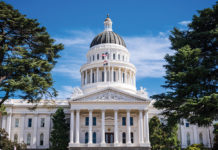We have dammed it, diverted it, paddled it, fished it, pumped
it, mined gravel from it, fed our crops and industries with it,
argued and legislated it, cursed it at flood times and marveled
over it most other times.
And now, we’re being called to help celebrate it.
It is our Russian River, our 110-mile lifeline that is the main
element of our region’s natural beauty and vast bounty. Fed by many
tributaries, it is the power source that carved our wide valleys,
crafted our narrow and crooked redwood canyons and married our
watershed with the great Pacific at Jenner.
Next Saturday, July 23, county regional parks, Healdsburg Museum
volunteers and others will revive an old river tradition and host a
water carnival with floats, music, food and games. The mid-summer
event at Healdsburg’s Memorial Beach will be a great opportunity
for all of us to share our gratitude for our natural life force. It
is also a fundraising event to support the county’s Memorial Beach
dam and swimming facilities.
Already this summer, we have been gathering with friends and
visitors at the river. From well above Healdsburg and at Lake
Sonoma, through the Middle Reach and lower river, thousands of us
play, swim, kayak and relax at our river beaches, campgrounds and
private retreats. It’s been that way since the first Healdsburg
water carnivals held back in 1908.
But our long summer relationship with our Russian River may be
altered by ongoing concerns over artifical flows and water
diversions that impact our endangered salmon and steelhead. Once
again, our competing uses for our river are causing new debates.
Federal officials may restrict summer artifical flows from Lake
Sonoma to better protect the native fish. Too low a river would
curtail our many recreational activities and businesses.
Our river is the source of municipal, domestic and industrial
water. The Sonoma County Water Agency serves 600,000 customers and
there are as many as 600 other permitted diversions along the main
stem of the river for irrigation, flood control, frost protection
and other human uses.
Since non-native settlers came here just over 200 years ago, the
Russian River has endured increasing manmade impacts, injuries,
amusements and demands. Recent years have seen important
restoration efforts, restricted mining and erosion and increased
public awareness.
In celebration next weekend, we should also be reminded our
river still needs more healing, better stewardship and protection.
It’s okay to play in the river, but we need to keep working for our
river as well.
A century ago, our river was home to such species as otters,
beavers, elk and many now-gone fish species like great white
sturgeons. As recent as the 1950s, the steelhead winter runs were
as big as 50,000. The runs now are just a few thousand even with
plantings from the Warm Springs Dam hatchery.
Even our communities and summer resorts have been diminished
over many years of use and social changes. Once upon a time,
thousands of summer visitors boarded trains destined for Howard’s
Station (Occidental), Monte Rio, Mirabel, Rio Nido and
Healdsburg.
Healdsburg had its annual Memorial Day and Fourth of July water
carnivals and pageants. Monte Rio filled a seven-story hotel and
other resorts. Benny Goodman and Jimmy Dorsey brought their big
jazz bands to Rio Nido and Mirabel. One of the dance pavillions was
perched on tall pilings out into the river.
Guerneville, the old lumber town once named Stumptown, was a
dazzling center of summer amusements, encampments, weekend
festivals and beach concerts.
Back then, “The River” was a car trip from San Francisco, or an
escape from another city. “The River” was the very definition of
“summer” to many a young visitor, family or annual gathering.
Once again it is summer on the river. May the celebrations never
end.
— Rollie Atkinson
45.5
F
Healdsburg
April 6, 2025







